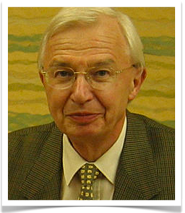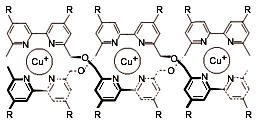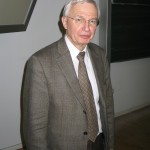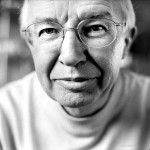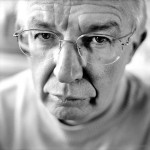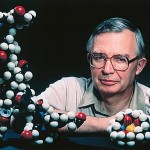Jean-Marie Lehn (born 1930, Rosheim, France), professor emeritus at the University of Strasbourg. In 1987 he was awarded with the Nobel Prize in Chemistry for his molecular recognition studies.
-
Education and Experiences
1960 Undergraduate Studies, University of Strasbourg: Licence ès-Sciences (Bachelor of Sciences), Strasbourg
1960 Member of the Centre National de la Recherche Scientifique (CNRS)
1963 Graduate work on “Conformational Studies of Triperpenes”; with Professor Guy Ourisson, University of StrasbourgDoctorat-ès-Sciences (Ph.D.), University of Strasbourg
1964 Post-Doctoral Research Fellow at Harvard University, work on vitamin B12 total synthesis with Professor Robert B. Woodward
1966 Maître de Conférences (Assistant Professor) at the University of Strasbourg
1970 Professeur sans chaire (Associate Professor) at the University Louis Pasteur of Strasbourg
1970 Professor of Chemistry at the University Louis Pasteur of Strasbourg
1979 Professor at Collège de France, Paris, since October 23rd; Chair of Chimie des Interactions Moléculaires
-
Awards and Honors
1963 Bronze Medal of the CNRS
1968 Adrian Prize of the Société Chimique de France
1972 Silver Medal of the CNRS
1978 Raymond Berr Prize of the Société Chimique de France
1981 Gold Medal of the Académie Pontificale des Sciences
1981 Gold Medal of the CNRS,
1981 Pierre Bruylants Medal, Louvain,
1982 Paracelsus Prize of the Swiss Chemical Society
1983 Alexander von Humboldt Forschungspreis
1984 Prize of the Commissariat à l’Energie Atomique awarded by the Académie des Sciences
1985 Rolf-Sammet Prize, Frankfurt University
1986 Prize of the Fondation Alsace
1987 George Kenner Prize, University of Liverpool
1987 Nobel Prize in Chemistry
1088 Sigillum Magnum, University of Bologna
1989 Minnie Rosen Award
1989 Vermeil Medal of the Ville de Paris
1989 Gold Medal of the Société d’Encouragement au Progrès
1989 Karl-Ziegler Prize, Gesellschaft Deutscher Chemiker
1992 Grand Bretzel d’Or, Institut des Arts et Traditions Populaires d’Alsace
1994 “Ettore Majorana-Erice-Science for Peace” Prize
1995 Gold Medal of the Société Académique Arts–Sciences–Lettres
1995 Gold Medal of Comenius University, Bratislava
1995 Golden Memorial Medal of the Faculty of Sciences, Charles University, Prague
1996 Honorary Medal of the Institute of Physical Chemistry, Polish Academy of Sciences, Warszawa
1997 The Davy Medal of the Royal Society
1998 Lavoisier Medal 1997 of the Société Française de ChimieTop 75 Award, C&N, American Chemical Society
1998 Allan R. Day Award of the Philadelphia Organic Chemists’ Club
2003 Messel Medal, Society of Chemical Industry, LondonPremio Barocco
2003 Gold Medal “Giulio Natta” of the Italian Chemical Society
2003 JSPS Award (Japan Society for the Promotion of Science)
2004 Gold Medal of the 70th Anniversary of the Fondation de la Maison de la Chimie
2005 Gold Medal of the University Paul Sabatier Toulouse III
-
Research
The research work of Jean-Marie Lehn led in 1968 to the synthesis of cage-like molecules that form inclusion complexes, the cryptates, with various metal ions. With this began his research on the chemical basis of ‘molecular recognition‘ , which also plays a fundamental role in biological processes. For these studies Lehn received the Nobel Prize for Chemistry in 1987.
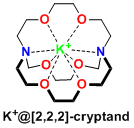
Over the years, Lehn’s main line of research has expanded from the studies on molecular recognition to the definition and exploration of a new field of chemistry, which he proposed calling ‘supramolecular chemistry‘ as it deals with the complex entities formed by the association of two or more chemical species held together by intermolecular forces, whereas molecular chemistry studies the features of the entities constructed from atoms linked by covalent bonds. Using these strategy, he has built helicates,[1] grids, cylindrical cages, and rotaxanes.
helicates
In the helicate work, Lehn has used molecular strands consisting of several bidentate binding sites, such as 2,2′-bipyridine, separated by spacers. When linear strands having, say, five bipyridine units are mixed with metal ions (such as Cu+) in solution, the strands wrap themselves around a row of five metal ions, forming double-helical metal complexes. Strands containing sequences of bidentate and tridentate binding sites, when exposed to two metal ions having different coordination geometries, will wrap around a row of metal ions having the most suitable coordination geometry for each binding site. Lehn’s group has used these principles to prepare a variety of double- and triple-helical complexes, including a complex in which two different strands form a double helix.[2]
Supramolecular chemistry is intrinsically a dynamic chemistry in view of the lability of the non-covalent interactions connecting the molecular components of a supramolecular entity and the resulting ability of supramolecular species to exchange their components. The same holds for molecular chemistry when the molecular entity contains covalent bonds that may form and break reversibility, so as to allow a continuous modification in constitution by reorganization and exchange of building blocks. These features define a Constitutional Dynamic Chemistry (CDC)[3] by Lehn on both the molecular and supramolecular levels.

Constitutional Dynamic Chemistry (CDC)
By combining the advantages of combinatorial chemistry and supramolecular chemistry, dynamic combinatorial chemistry may become a powerful tool for drug discovery and materials science.[4]
-
References
[1] Lehn, J.-M. ; Rigault, A.; Siegel. J.; Harrowfield, J.; Chevrier, B.; Moras, B. Proc. Natl. Acad. Sci. 1987, 84, 2565.
[2] Kramer, R.; Lehn, J.-M.; Marguis-Rigault, A. Proc. Natl. Acad. Sci. 1993,90, 5394.[PubMed]
[3] (a) Lehn, J.-M.; Eliseev, A.V. Science 2001, 291, 5512. DOI:10.1126/science.1060066 (b) Corbett, P. T.; Leclaire, J.; Vial, L.; West, K. R.; Wietor, J.-L.; Sanders, J. K. M.; Otto, S. Chem. Rev. 2006, 106, 3652. DOI:10.1021/cr020452p (c) Lehn, J.-M. Chem. Eur. J. 1999, 5, 2455.[abstract]
[4] Ramstrom, O.; Lehn, J.-M. Nat. Rev. Drug Discov. 2002, 1, 26. doi:10.1038/nrd704
[5] (a) Lehn, J.-M. Proc. Natl. Acad. Sci. 2002, 99, 4763. doi:10.1073/pnas.072065599 (b) Lehn, J.-M. Angew. Chem. Int. Ed. 2013, 52, 2836. DOI: 10.1002/anie.201208397 (c) Lehn, J.-M.Science 2002, 295, 2400. DOI:10.1126/science.1071063 (d) Goodman, C. Nat. Chem. Biol. 2007,3, 685. doi:10.1038/nchembio1107-685
-
Related Links
Jean-Marie Lehn - Autobiography Nobelprize.org
Jean-Marie Lehn - Wikipedia
Supramolecular Chemistry - Wikipedia
Cryptand - Wikipedia
-
Photo Gallery
- Movies
-
Related Books
[amazonjs asin=”3527325972″ locale=”US” title=”Concepts of Nanochemistry”][amazonjs asin=”B00FNSHWSC” locale=”US” title=”Supramolecular Chemistry Paperback June 1995 (Author) Jean-Marie Lehn”][amazonjs asin=”3527325468″ locale=”US” title=”Experiments in Green and Sustainable Chemistry”]

